Counter
-
- A counter by function is a sequential circuit consisting a set of flip-flops connected in a suitable manner to count the sequence of the i/p pulses presented to it in digital form. Counters are fundamental components of digital system.
- Digital counters find wide application like pulse counting, frequency division, time measurement and control and timing operations.
There are two different types of counter: Asynchronous (Ripple) Counter and Synchronous (Parallel) counter
Asynchronous Counter (Ripple Counter)
These are commonly called as ‘Ripple counters’ because only one of the flip flops is directly clocked from an external clock source and as the number of pulses increases, the consecutive flip flops get clocked which gives a ‘ripple effect’.
3 bit asynchronous counter

The output conditions are as shown in the truth table.

Asynchronous Decade Counter

Decade Counter Truth Table
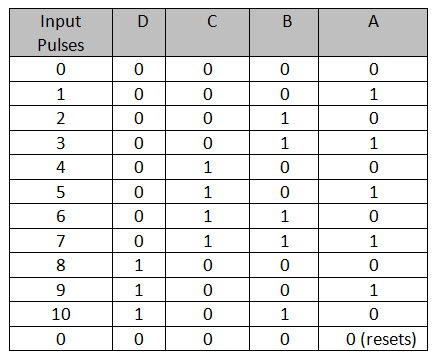

Asynchronous 3-bit up down counter
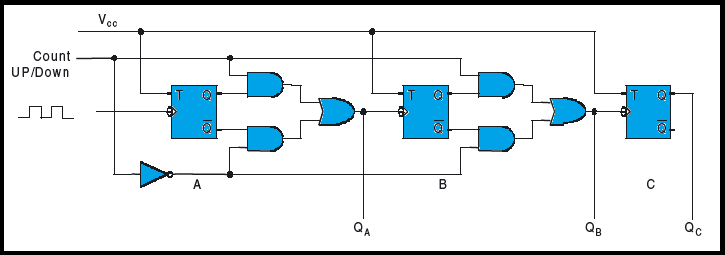
The operation of such a counter is controlled by the up-down control input. Now question is in which sequence it will count see below the table for the counting sequence of the it in the two modes of counting.
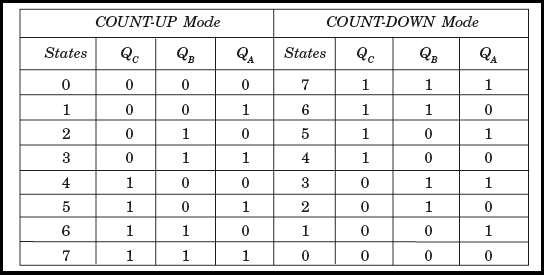
Advantages
- Asynchronous counters can be easily designed by T flip flop or D flip flop.
- These are also called as Ripple counters, and are used in low speed circuits.
- They are used as Divide by- n counters, which divide the input by n, where n is an integer.
- Asynchronous counters are also used as Truncated counters. These can be used to design any mod number counters, i.e. even Mod (ex: mod 4) or odd Mod (ex: mod3).
Disadvantages
- Sometimes extra flip flop may be required for “Re synchronization”.
- To count the sequence of truncated counters (mod is not equal to 2n), we need additional feedback logic.
- While counting large number of bits, the propagation delay of asynchronous counters is very large.
- For high clock frequencies, counting errors may occur, due to propagation delay.
Applications of Asynchronous Counters
- Asynchronous counters are used as frequency dividers, as divide by N counters.
- These are used for low power applications and low noise emission.
- These are used in designing asynchronous decade counter.
- Also used in Ring counter and Johnson counter.
- Asynchronous counters are used in Mod N ripple counters. EX: Mod 3, Mod 4, Mod 8, Mod 14, Mod 10 etc.
Synchronous Counter
Synchronous Counters are so called because the clock input of all the individual flip-flops within the counter are all clocked together at the same time by the same clock signal
Binary 4-bit Synchronous Up Counter


Binary 4-bit Synchronous Down Counter

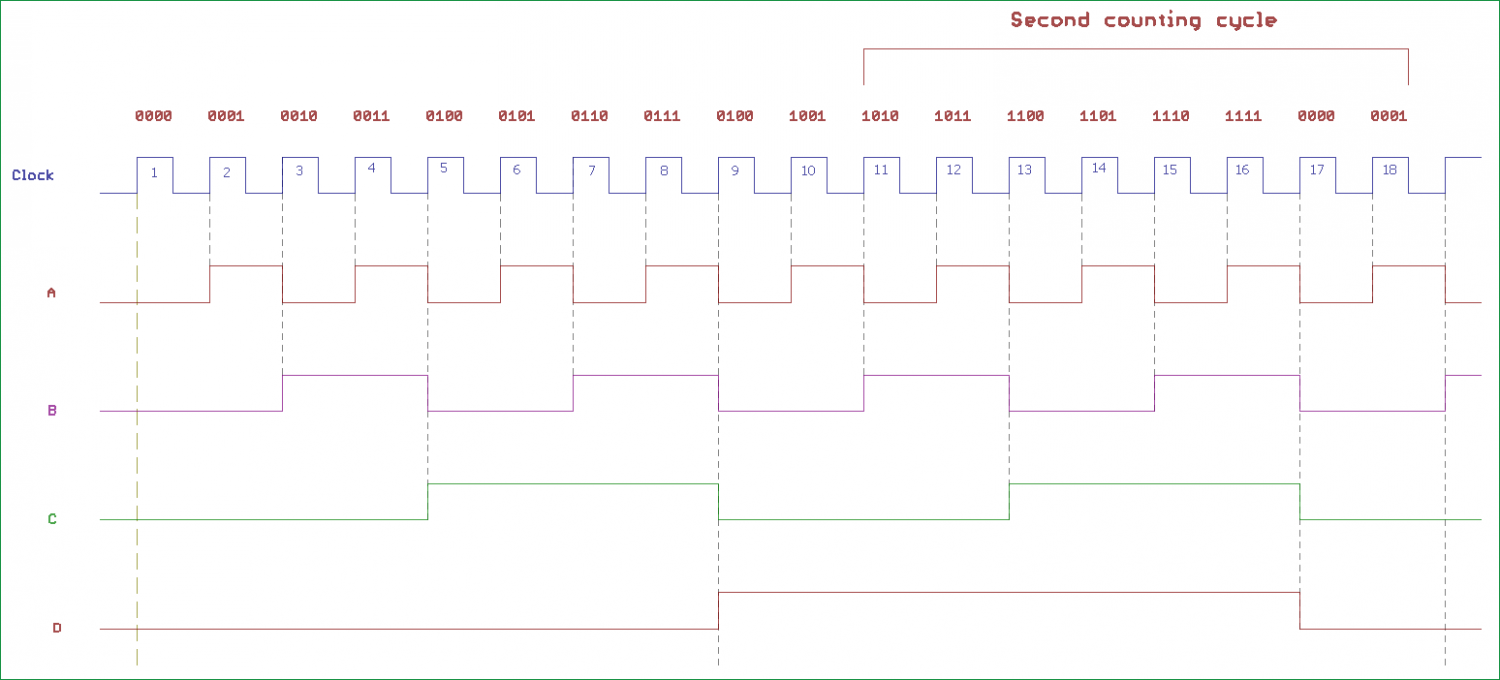
Decade 4-bit Synchronous Counter


Bidirectional Counters.
Both Synchronous and Asynchronous counters are capable of counting “Up” or counting “Down”, but their is another more “Universal” type of counter that can count in both directions either Up or Down depending on the state of their input control pin and these are known as Bidirectional Counters.
Bidirectional counters, also known as Up/Down counters, are capable of counting in either direction through any given count sequence and they can be reversed at any point within their count sequence by using an additional control input as shown below.
Synchronous 3-bit Up/Down Counter
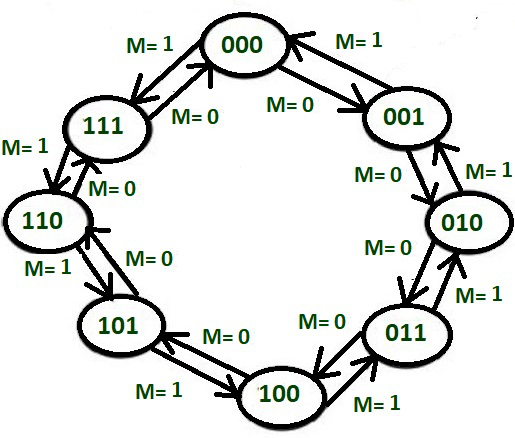

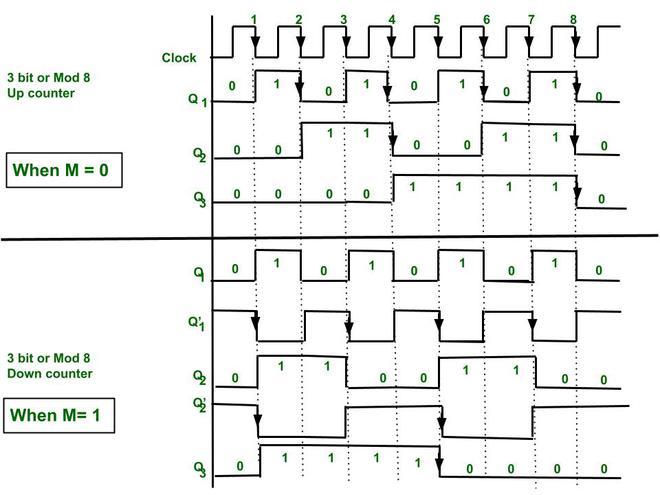
or

|
Asynchronous counter
|
Synchronous counter
|
|
1. In case of asynchronous counter, all the flip-flops are not clocked simultaneously.
|
In case of synchronous counter, all the flip-flops are clocked simultaneously.
|
|
2. In the case of asynchronous counter, the output of first flip-flop drives the clock for second flip-flop, the output of second drives the third and so on.
|
In case of synchronous counter , there is no interconnection between output of one flip-flop and clock of next flip-flop,
|
|
3. The settling time of asynchronous counter is cumulative sum of individual flip-flops.
|
The settling time of synchronous counter is equal to highest settling time of all flip-flops. theses are basic difference between asynchronous and synchronous counter.
|
|
4. Asynchronous counter is known as serial counter
|
Synchronous counter is known as parallel counter.
|
|
5.Its design and implementation is very simple.
|
Synchronous counter design and implementation becomes tedious and complex as the number of states increases.
|
|
6. Asynchronous counter is slow in speed as compare of synchronous counter.
|
Synchronous counter is faster in speed as compare to asynchronous counter.
|

